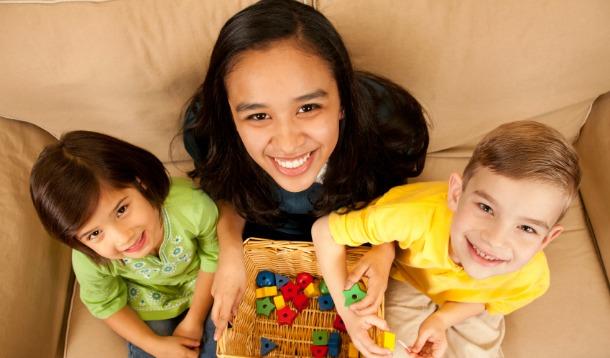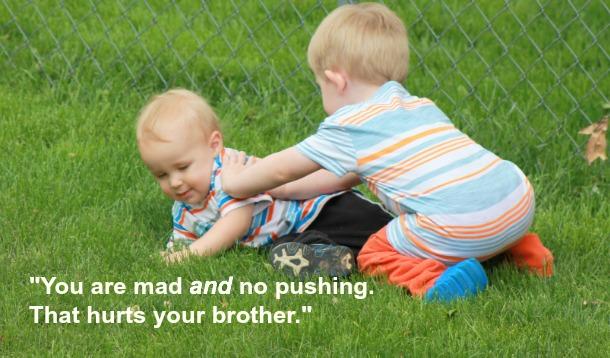
It has been ten years since children's singer/songwriter Raffi spent time in a recording studio. Thankfully, for parents and their children, the release of Raffi’s new album, called Love Bug, happened this July. Curious of what motivated Raffi to turn the recording microphones back on after all these years, I sat down with him to discuss what sparked this recent project.
Raffi beamed when he talked about the great joy he had doing concerts again after a ten year lull. I had the privilege of being present both in the audience and during the meet-and-greet for one of those shows. What struck me by that experience was that Raffi was truly and completely joyful. I assumed that he was tired from his tour, but for the many families who patiently stood in line to meet him, Raffi hugged each child, posed for a picture, looked into their eyes, and spoke with them.
Actually, his staff members were trying to hurry him along because he had another show, but Raffi seemed to be so caught up in the children’s happiness that time evaporated. Just when I thought I couldn’t smile anymore from watching him with the kids, the last family finally got to the front of the line. A mentally disabled teenage girl in a wheelchair, along with her family, had come several hundred miles to the show. Raffi looked in her eyes so sweetly as he sang her favourite song to her. Raffi’s staff, the girl’s parents, and myself were all in tears as we watched the two of them interact. It was such a powerful moment.
The feeling of reconnecting with his fans, both “beluga grads” and their children, was a strong motivator, yet there were other reasons that moved Raffi to write a new album. A visit with Pete Seeger—a great inspiration to Raffi—the emotionally challenging time of writing the social media book, Lightweb Darkweb, and Raffi’s concern that children were becoming obsessed with digital devices contributed to his musical surge.
Raffi said, “I felt the need to express myself in new music once again, in the form of a kids’ album that celebrated love and the real world in an age of digital tech overreach into every aspect of human life. You might say this music is in response to that overreach.”
I have heard parents call their children “Love Bug,” and wondered if that might be where the title for this new album came from. Raffi told me that the song and album title sprang from the guitar riff you hear in the intro, a minor key riff that sets up the surprising first line, “Everybody’s got a love bug, deep inside.” He wanted to put attention on what he calls, “A truth and a miracle: that each newborn babe is born with innate love.”
Raffi wanted to remind children that regardless of their external circumstances, at their core, they are loving beings who need to connect physically and emotionally with other people.
I downloaded Love Bug for my young children, and in addition to using the songs to make tidy time enjoyable, I find this album helpful for getting my little ones through challenging times. Whenever I can see a tantrum on the horizon, I crank up the song, “Doggone Woods,” which never fails to make my guys laugh and start barking along. As Laura Markham, PhD says, “Laughter releases the same energy of tears.”
At the end of our lovely chat, Raffi smiled and said, “At sixty-six years of age, I am very fortunate to be making music for new generations of children and their families. It is an honour to echo the wisdom of child development professionals and their focus on real world learning, and the likes of those such as Nelson Mandela and Pete Seeger who have so deeply inspired me.”

In this new digital era, here are some guidelines to make the internet a fun and helpful place for our children, not a place where they are inadvertently put in harm's way.

As more parents return to work within a year or two of the birth of the children, and daycare spaces become scarce, many families have turned to employing a nanny.
Like any relationship, the one between parents and their employed nanny can have its ups and downs. Here are my suggestions for creating a positive relationship with your nanny, which will support positive development in your children.
 Remember that you have an employee-employer relationship with your nanny.
Remember that you have an employee-employer relationship with your nanny.
As much as your nanny might feel like family, particularly if that person lives with you, this is a hired help relationship. As such, create a work agreement that includes things like work hours, job responsibilities (including pet care), house rules, sick/vacation leave, and pay frequency. Make sure your nanny is clear on what you expect of her, and make sure you don’t ask for things beyond the scope of the agreement.
 Discuss child-rearing strategies with your nanny.
Discuss child-rearing strategies with your nanny.
Speak with your nanny about your parenting philosophy. If you are using positive discipline techniques (which I recommend), provide resources for your nanny to read so her interaction with the children is in line with your beliefs. I suggest getting the books from the series called POSITIVE DISCIPLINE, by Jane Nelsen, PhD.
If you have parenting no-nos, like threats, bribes, coercion, or spanking, list those for your nanny. Talk with her about how to interact with your children when they aren’t following her instructions.
 Give your nanny space to build a positive relationship with your child.
Give your nanny space to build a positive relationship with your child.
Just like the relationship with other parents, grandparents, and caregivers, give your nanny time and space to develop her style of child-rearing. This space will include learning from mistakes, so encourage this valuable learning by not jumping in when things between the nanny and your children are heading south. Give her time to try and find a solution.
 Pass the “attachment torch” over to your nanny.
Pass the “attachment torch” over to your nanny.
Secure attachment grows through all the primary caregivers that a child has. When all of those caregivers pass the torch to each other, the child feels a sense of calm that he or she is being taken care of by people who are on the same team.
When you leave in the morning, use an attachment bridge with your children so they know when they will see you again, then look at the nanny and say something like, “Okay, it’s your turn to spend time with these great kids.” Ensure that your children see you are calm and confident in leaving them with the nanny.
I suggest finding a nanny who can be with your family long-term, even after the children enter school. I know that some mothers feel threatened by the relationship between their children and the nanny—that they might love her more—and get a new nanny each year. Doing this could actually grow some abandonment core beliefs within the child, so I don’t recommend this approach.
The longer the nanny can be in your child’s life in some respect, the more positive core beliefs will develop from that experience.
 Discuss your concerns with the nanny privately.
Discuss your concerns with the nanny privately.
If you see your nanny interact with your child in a way you don’t like, wait until you can speak with her in private about this. Don’t correct her in front of the children.
When you discuss concerns with her, ask for her perspective and give her an opportunity to think of alternatives first. As with any employer-employee relationship, make the correction a positive experience so the nanny feels capable and that valuable learning took place.
 Have regular check-in meetings.
Have regular check-in meetings.
Regular weekly meetings help catch small problems before they become huge and to create game plans. In these meetings, clarify logistical things, like which adult is taking children to activities and who is making supper on a particular day. Also, check in with your nanny to see if she is getting enough rest. Dial her duties up or down depending on what is happening in the household for that week.
 Communicate how grateful you are.
Communicate how grateful you are.
It is likely that your nanny is doing a pretty good job of taking care of your children and your house while you are away. Think of all the things you are grateful for that she does, and you no longer need to do. Let her know how much you appreciate her.
Also, communicate your gratitude by not overwhelming her with too many chores, unpaid extra hours, or interacting with her during her time off. Periodically give her some unexpected bonuses, like being able to end work early or offering to buy something she’d like to have.
 Show your nanny that you see how capable she is.
Show your nanny that you see how capable she is.
In addition to messages of gratitude, people feel more connected when you mention that you see them handling themselves well during a challenge. If your nanny does way more than you expected her to or she handles your child during a tense time, let her know that you saw her doing so.
I’d like to thank the parents in my Facebook community for sharing their nanny expertise with me. If you have any comments or questions, feel free to pop over and post those there.

It is easy to feel that our children are selfish or trying to hurt us when they are little. Young children can be quite aggressive! Did you know that two-year-olds are actually the most violent beings on earth?
It is helpful to know that children aren’t throwing, hitting or shouting at us because they are trying to hurt or manipulate us, they are doing so because they are overwhelmed with emotion and lack a brain functioning called, “having mixed feelings.”
I first heard about this term through Gordon Neufeld, PhD, when he used it to describe how we hold two different thoughts or feelings at the same time and the same place. It is when we can simultaneously think—When I hit my brother, I feel better and at the same time realize, When I hit my brother, he gets hurt and sad and that bothers me.
This is an awareness that comes with maturity and time (and some coaching!). Mixed feelings help you think twice, have empathy for others, and be more considerate. They can help you to think, I love eating cake! and at the same time realize, Eating a second piece of cake will not help me to stay healthy or maintain the body weight I want.
When a person holds these two thoughts, the one a person ends up acting upon—eating too much cake or stopping herself from doing that—depends on how strong her positive inner voice is. It’s that devil on our shoulder saying either, Go ahead, have the cake; you deserve it (that guy was an a**hole for breaking up with you) or One piece is enough to enjoy it. Move on to the rest of your day.
How do we help grow mixed feelings in our children?
We do so by planting the seeds to think or feel about two opposing concepts at the same time. This is done by pointing out when a child, your partner, or yourself is simultaneously considering how he and others is perceiving something. Use words to explain to your child that he feels one thing and at the same time, feels another, different thing.
For example:
When a toddler does normal toddler things like biting, hitting or throwing, say, “You are angry and no hitting.” (AND, not BUT) “Hitting mommy hurts me! Ouch!” You can add in a scowling face when saying “angry” and shake your head “no” when you say that word.
For a four-year-old, add some more words, “Your brother took your car (see what happened). I see you are angry (name the feeling) AND it is not okay to hit him.” After a pause for him to let those words sink in, then talk about options instead of hitting, “When you are that mad, use your calm-down plan so you can think instead of hit.” Pause again for more processing, then offer, “What are some things you could do or say instead of hitting him?”
The steps I just described are what I call a frutration-reduction plan:

Another way to grow mixed feelings is to use the words “at the same time” often like this:
“I really want eat the last cookie, but I know if I do that, you won’t get any. I want this but at the same time, I know you do, too. What can I do?”
“Your dad really wants to come to your game but at the same time, he wants to be at a very important meeting. What do you think his options are?”
“You hit your sister. That is not okay. She feels sore and sad when you hit her.” Pause, then say, “When you want to hit her because she called you a name, at the same time you know hitting hurts her. What else can you do to get her to stop calling you names?”
When a child is unable to do mixed feelings (which doesn’t usually start happening until after around age five) he will stop after the first thought: I am angry and I want to hit my sister. Continually coaching him through to the next thought, Hitting hurts her, will eventually grow that brain connection.
Neufeld says that when a child (or parent) can’t hold the two thoughts, she “has lost her mix.” Think of the times when you can see your child is struggling, but you can’t get the mix to be empathetic for your child. Perhaps as your child is screaming, refusing to get her pajamas on, and you keep telling yourself, I’ve had it with this kid! you are unable to hear the mix, I see that forcing her into her PJs hurts her. I need to stop doing that and think of a playful or clever way—or pick my battles, let her sleep in her jeans, and try again tomorrow.
*Often, the solution to getting your mix back is to be rested and walk through your calm-down plan.
I continually post free parenting support and resources on my Facebook page. If you have any questions or comments, I invite you over there to join our parenting community.